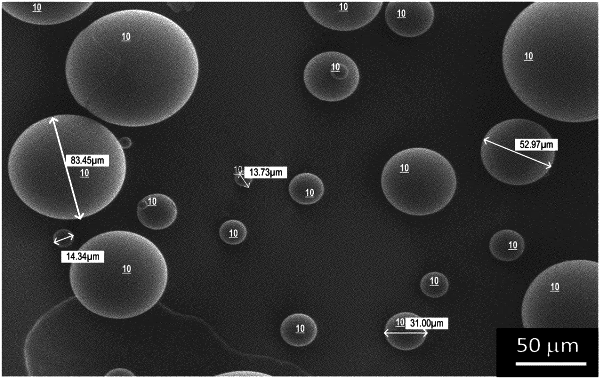| CPC G01N 33/52 (2013.01) [A61K 9/0009 (2013.01); A61K 9/5084 (2013.01)] | 7 Claims |

|
1. An event detection composite comprising:
a first plurality of glass microspheres, each microsphere of the first plurality of glass microspheres comprising a first porous outer wall surrounding a first hollow central core comprising a first microsphere volume;
a functional material;
a payload within each microsphere volume, the payload having the functional material encapsulated within each hollow central core and a payload volume relative to the microsphere volume as a result of a microsphere loading factor;
wherein the functional material is disposed within each hollow central core as a result of a payload loading cycle method comprising mechanical, thermal or chemical method steps of drawing the payload through each porous outer wall and into each microsphere volume, the payload loading cycle method capable of maximizing the microsphere loading factor;
a host material wherein the first plurality of glass microspheres is dispersed in the host material;
the event detection composite exhibiting one or more properties responsive to specific stimuli, the event detection composite configured to change the one or more properties in response to the specific stimuli selected from a group comprising a mechanical stimulus, an optical stimulus, an electrical stimulus, a magnetic stimulus, a thermal stimulus, and a chemical stimulus;
wherein a change in the one or more properties elicits a response based at least in part on the microsphere loading factor;
a reactive material;
a second plurality of glass microspheres comprising a second porous outer wall surrounding a second hollow central core comprising a second microsphere volume, each glass microsphere of the second plurality of glass microspheres housing the reactive material and dispersed in the host material wherein the reactive material and the functional material are configured to react to elicit the response.
|